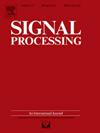Reversible adversarial visible image watermarking
IF 3.4
2区 工程技术
Q2 ENGINEERING, ELECTRICAL & ELECTRONIC
引用次数: 0
Abstract
Visible watermarking serves as a crucial security mechanism for safeguarding the copyright of digital images. Recent advancements, however, have shown that deep neural networks can effectively remove these watermarks without altering the underlying host image, posing a substantial risk to copyright protection. Motivated by the susceptibility of neural networks to adversarial perturbations, various adversarial visible watermarking techniques have been introduced. Nonetheless, these approaches often overlook the need for image reversibility, which is vital for authorized sharing while maintaining privacy. To address this issue, we propose Reversible Adversarial Visible Watermarking (RAVW), which uses Gradient-weighted Class Activation Mapping (Grad-CAM) to pinpoint the important regions in the host image that are optimal for watermark embedding. It then employs an end-to-end generative model to create reversible adversarial visible watermarks within these regions, effectively counteracting watermark removal networks. Additionally, authorized users can eliminate the visible watermark via a dedicated restoration module. Comprehensive experimental evaluations confirm the robustness of our method in preserving visible watermarks and its effectiveness against watermark removal networks.
求助全文
约1分钟内获得全文
求助全文
来源期刊

Signal Processing
工程技术-工程:电子与电气
CiteScore
9.20
自引率
9.10%
发文量
309
审稿时长
41 days
期刊介绍:
Signal Processing incorporates all aspects of the theory and practice of signal processing. It features original research work, tutorial and review articles, and accounts of practical developments. It is intended for a rapid dissemination of knowledge and experience to engineers and scientists working in the research, development or practical application of signal processing.
Subject areas covered by the journal include: Signal Theory; Stochastic Processes; Detection and Estimation; Spectral Analysis; Filtering; Signal Processing Systems; Software Developments; Image Processing; Pattern Recognition; Optical Signal Processing; Digital Signal Processing; Multi-dimensional Signal Processing; Communication Signal Processing; Biomedical Signal Processing; Geophysical and Astrophysical Signal Processing; Earth Resources Signal Processing; Acoustic and Vibration Signal Processing; Data Processing; Remote Sensing; Signal Processing Technology; Radar Signal Processing; Sonar Signal Processing; Industrial Applications; New Applications.
 求助内容:
求助内容: 应助结果提醒方式:
应助结果提醒方式:


